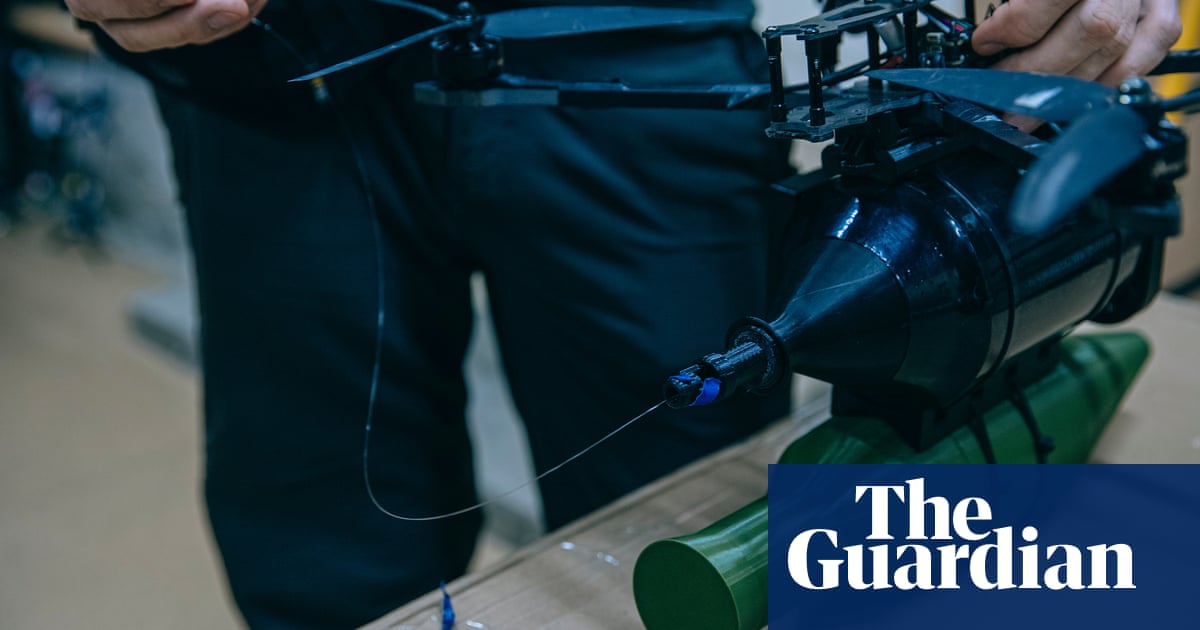At a secret workshop in Ukraine’s north-east, where about 20 people assemble hundreds of FPV (first person view) drones, there is a new design. Under the frame of the familiar quadcopter is a cylinder, the size of a forearm. Coiled up inside is fibre optic cable, 10km (6 miles) or even 20km long, to create a wired kamikaze drone.
Capt Yuriy Fedorenko, the commander of a specialist drone unit, the Achilles regiment, says fibre optic drones were an experimental response to battlefield jamming and rapidly took off late last year. With no radio connection, they cannot be jammed, are difficult to detect and able to fly in ways conventional FPV drones cannot.
“If pilots are experienced, they can fly these drones very low and between the trees in a forest or tree line. If you are flying with a regular drone, the trees block the signal unless you have a re-transmitter close,” he observes. Where tree lined supply roads were thought safer, fibre optic drones have been able to get through.



Not just that but the pilot can be on the other side of the world from wherever the fiber leads out.
Most likely the fiber is coming out of a bunker that just has some switches and a TACLANE or something similar. Doesn’t take much infra…you need that, some sort of low-latency network connection, and room for drones to take off.
Once it’s set up, the site can be unmanned. Hell they can rig it to blow itself up after the mission is complete, so that nothing can be recovered from the infra if it’s found.
For that matter, most of the drones flight path could be pre- programmed…the pilot only there as a contingency. Doing that, one operator could control several drones simultaneously.